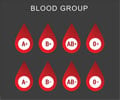A fundamental feedback mechanism that the body uses to regulate clotting of blood has been discovered by researchers at the Harvard University
A fundamental feedback mechanism that the body uses to regulate clotting of blood has been discovered by researchers at the Harvard University.
The researchers reach the conclusion by applying cutting-edge techniques in single-molecule manipulation.Scientists say the finding, which could lead to a new physical, quantitative, and predictive model of how the body works to respond to injury, has implications for the treatment of bleeding disorders.
A team, co-led by Timothy A. Springer, Latham Family Professor of Pathology at Harvard Medical School and Children's Hospital Boston, and Wesley P. Wong, Rowland Junior Fellow and a Principal Investigator at the Rowland Institute at Harvard, reported its discovery about the molecular basis for the feedback loop responsible for hemostasis in the June 5th issue of Science.
"The human body has an incredible ability to heal from life's scrapes and bruises. A central aspect of this response to damage is the ability to bring bleeding to end, a process known as hemostasis. Yet regulating hemostasis is a complex balancing act," Wong said.
Too much hemostatic activity can lead to an excess of blood clots, resulting in a potentially deadly condition known as thrombosis. If too little hemostatic activity occurs in the body, a person may bleed to death.
To achieve the proper balance, the body relies on a largely mechanical feedback system that relies on the miniscule forces applied by the circulation system on a molecular "force sensor" known as the A2 domain of the blood clotting protein von Willebrand factor (VWF).
Advertisement
he unfolding event allows the cutting of the molecule by an enzyme known as ADAMTS13.
Advertisement
To make the discovery, the team relied upon an "optical tweezers" system developed in Wong's lab. The tweezers are capable of applying miniscule forces to individual molecules while observing nanoscale changes in their length. Such manipulations enabled the researchers to characterize both the unfolding and refolding rates of single A2 molecules under force, as well as their interaction with the enzyme.
The molecular construct was created in Dr. Springer's lab, and consisted of an A2 domain connected to two DNA handles for manipulation. This elegant molecular system allowed the VWF "shear sensor" to be carefully studied and tested in isolation.
Source-ANI
RAS












